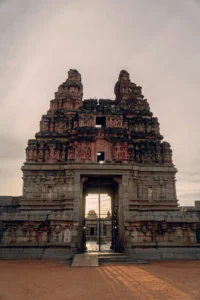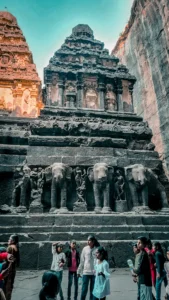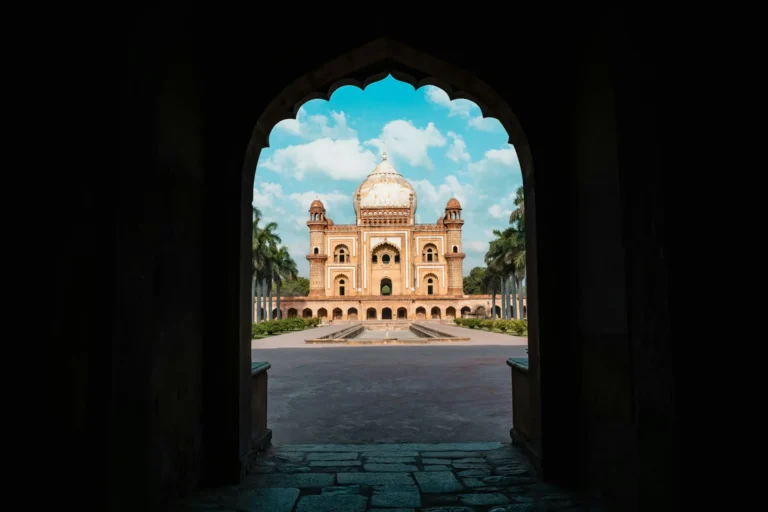North and South Indian temples are magnificent architectural works that reflect India’s various cultural and religious traditions. These temples feature different architectural styles and customs that have evolved over centuries. To comprehend the distinctions between North Indian vs South Indian temples we must examine their histories, architectural styles, religious practices, cultural influences, and artistic components.
India, a country with many various cultures and religions, has hosted countless kings and empires all of which left an indelible mark on temple architecture. Unique temple traditions may be found in North India including Rajasthan, Uttar Pradesh, Madhya Pradesh, and Gujarat as well as South India, which includes Tamil Nadu, Kerala, Karnataka, and Andhra Pradesh.

Table of Contents
ToggleHistorical Background
The architecture and artwork of the temples in North and South India are a reflection of their rich historical past. The history of North Indian temples which are influenced by Persian and Central Asian architecture is intricately linked to several dynasties including the Mauryas, Guptas, Mughals and Rajputs.
On the other hand South Indian temples have their roots in the Dravidian architectural style and are associated with the Cholas, Pallavas, Cheras and other southern dynasties.
Understanding the Two Styles
Two general categories can be used to describe Indian temple architecture:
- Nagara Style (North India)
- Dravidian Style (South India)
Each has its own design philosophy, construction techniques and aesthetic appeal creating a striking contrast while representing the same spiritual ideals.

Key Architectural Differences
1. Tower Structure: Shikhara vs. Gopuram
North Indian Temples (Nagara Style):
The main difference is the shikhara, a tall curved tower that rises directly over the sanctum (garbhagriha) and frequently resembles a beehive. The emphasis is on verticality which represents Meru the celestial mountain that serves as the universe’s axis in Hindu mythology. In North Indian Hindu Temples are mainly built in the Nagara architecture style. One feature that sets this architectural style apart is the shikhara, a curved tower or spire that rises above the sanctum sanctorum. The shikhara is usually decorated with complex designs portraying scenes from epics, mythology, and religious stories.
The most well-known example of the Nagara style temples is the Kandariya Mahadeva Temple in Khajuraho, Madhya Pradesh. This temple with its magnificent spire and exquisite sculptures is the pinnacle of North Indian temple architecture.

South Indian Temples (Dravidian Style):
The most noticeable aspect in the South is the gopuram which is often higher and more complex than the sanctum tower. The main shrine tower (vimana) is comparatively shorter but intricate, emphasizing the grandeur of the entire temple complex rather than just the sanctum.
On the other hand South Indian temple architecture is known as Dravida. This design is typified by the vimana or gopuram, a pyramidal tower that progressively recedes as it climbs and is frequently embellished with sculptures of mythological animals, gods and goddesses.
One of the most famous Dravidian-style temples is the Brihadeeswara Temple in Thanjavur, Tamil Nadu. This temple established by Chola ruler Raja Raja I is a magnificent example of the grandeur and intricacy of temple architecture in South India.
2. Temple Layout
North India:
A porch, a sanctuary and a small hall (mandapa) are common features of temples. Multiple minor shrines may surround the main sanctum. The complexes are simpler with the emphasis on the central deity.
South India:
South Indian temples are massive, with numerous enclosures (prakara) , enormous courtyards, large halls (mandapas) , tanks or ponds (pushkarni), and several gopurams arranged along cardinal axes. Temples are frequently designed to resemble small universes.

3. Material and Ornamentation
North India:
Sandstone and marble are commonly used. Ornamentation tends to be intricate but more delicate with fine sculptures, latticework (jaali) and symbolic carvings of deities and cosmic motifs.
South India:
Granite, a harder stone, is more commonly used due to its availability. Sculptures are bolder, more robust and colorful. The walls and gopurams are frequently painted with bright imagery from mythology giving temples a lively festive appearance.
4. Symbolism
Temples in North India place a strong emphasis on the rising shikhara which represents emancipation and the soul’s upward journey as it ascends toward the skies.
South Indian temples represent a sacred cosmos where devotees move from the profane outer world to the sacred inner sanctum reflecting the journey toward spiritual enlightenment.
Examples of Iconic Temples
North India:
North Indian Hindu Temples
- Kashi Vishwanath Temple Varanasi (Uttar Pradesh)
- Kandariya Mahadev Temple Khajuraho (Madhya Pradesh)
- Jagannath Temple Puri (Odisha)
- Sun Temple Konark (Odisha)
South India:
Famous Temples in TamilNadu
- Meenakshi Amman Temple Madurai (Tamil Nadu)
- Brihadeeswarar Temple Thanjavur (Tamil Nadu)
- Virupaksha Temple Hampi (Karnataka)
- Ranganathaswamy Temple Srirangam (Tamil Nadu)
Cultural and Spiritual Importance
Centers of Devotion:
They serve as spaces for worship, meditation and spiritual gatherings facilitating a deeper connection between the individual and the divine.
Cultural Hubs:
South Indian Temple Art have historically been centers for classical arts like music, dance, sculpture and painting. Festivals and rituals associated with temples continue to preserve India’s vibrant cultural heritage.
Economic and Social Role:
Many temples historically acted as centers of economic and administrative activity supporting artisans, scholars and local communities.
Symbol of Identity:
Temples also act as a reflection of regional identity pride and tradition with each temple narrating the legacy of the dynasty or kingdom that built it.
Importance
Beyond architecture these temples play vital roles in social, cultural and religious life. They are not just places of worship but centers for South Indian Temple Art, music, dance and festivals that bring communities together. North Indian temples often focus on the idea of the mountain as a symbol of divine abode while South Indian temples are planned as miniature cosmic worlds emphasizing a journey from the earthly to the spiritual.
Together the temples of North and South India contribute significantly to the nation’s identity by upholding customs, encouraging devotion and exhibiting the astounding range of Indian spirituality and artistic expression.

Conclusion
While North vs South Indian temples differ in architecture, scale and ornamentation they both represent the same universal truths — devotion, cosmic harmony and the spiritual journey of humanity. These temples are not merely monuments of the past, they are living traditions that continue to inspire awe, devotion and a deep sense of cultural pride across generations.
India’s temple architecture reminds us that while the expressions of faith might vary, the underlying spirit of devotion remains beautifully unified.


